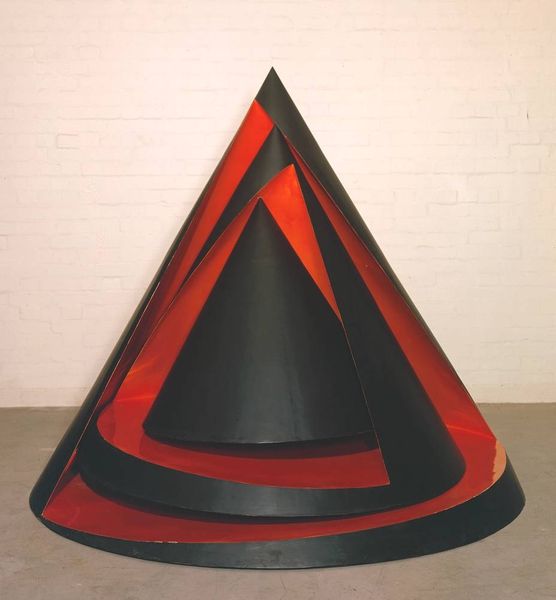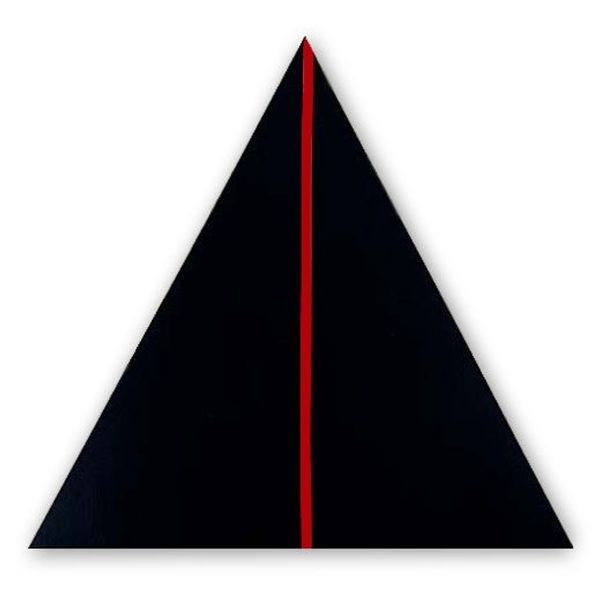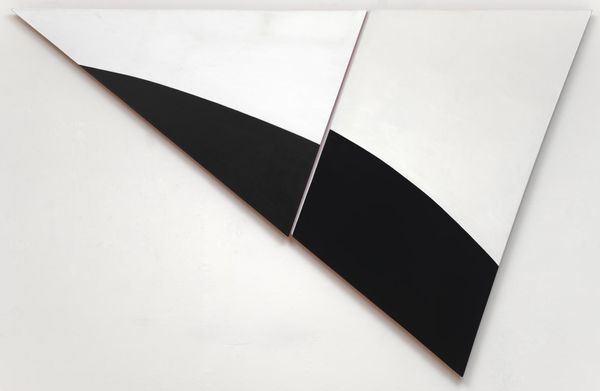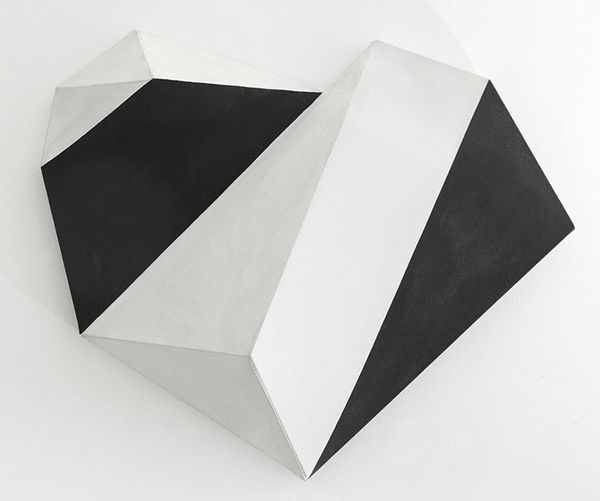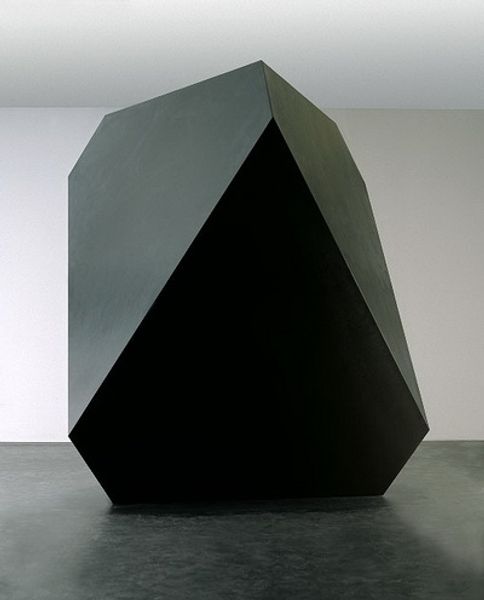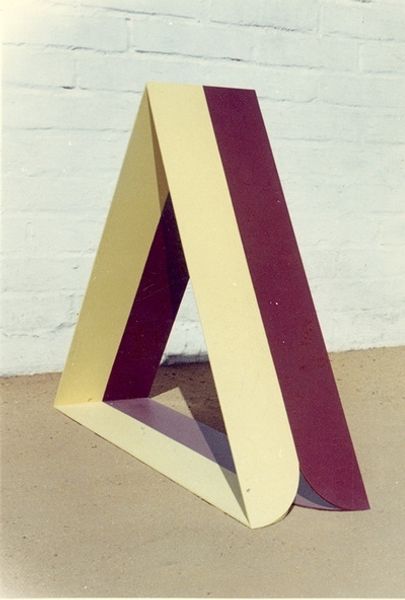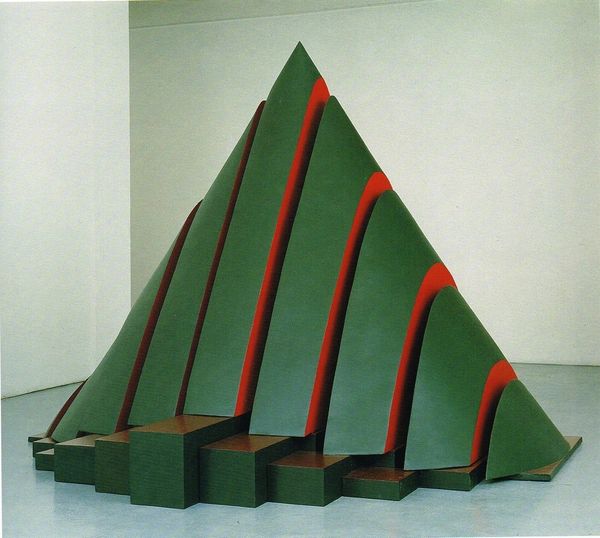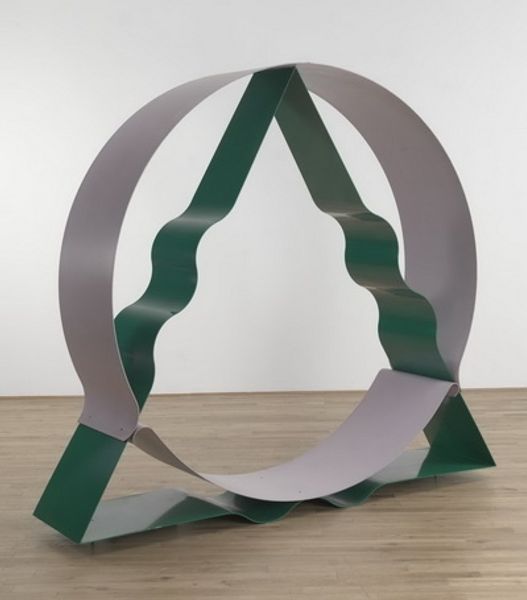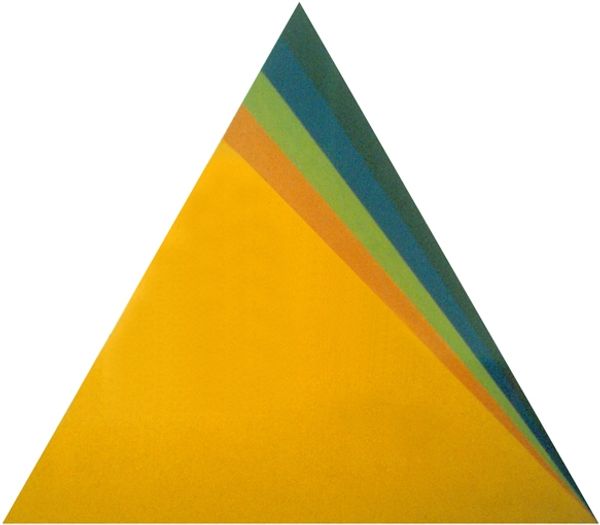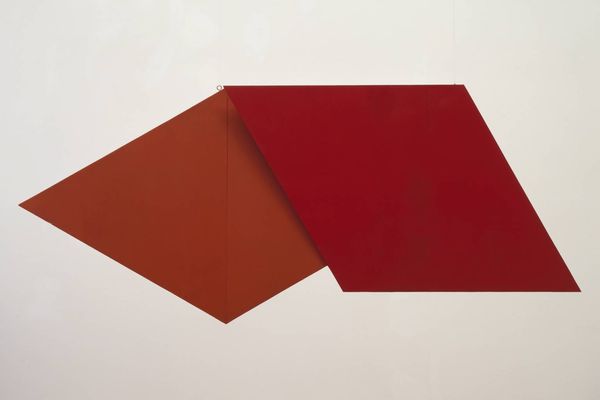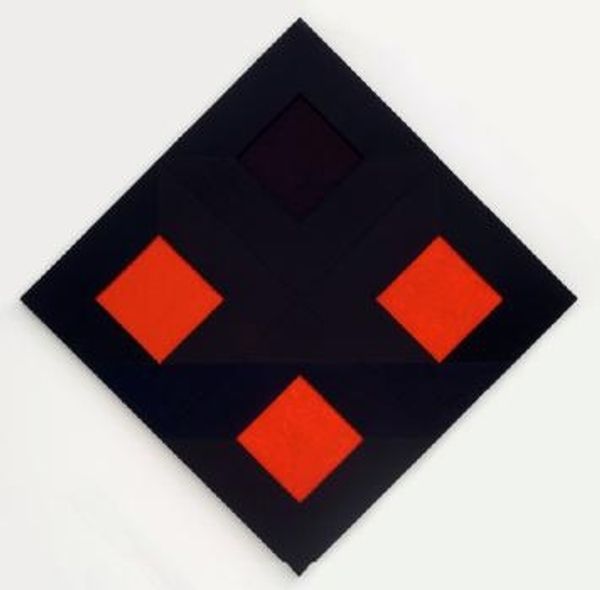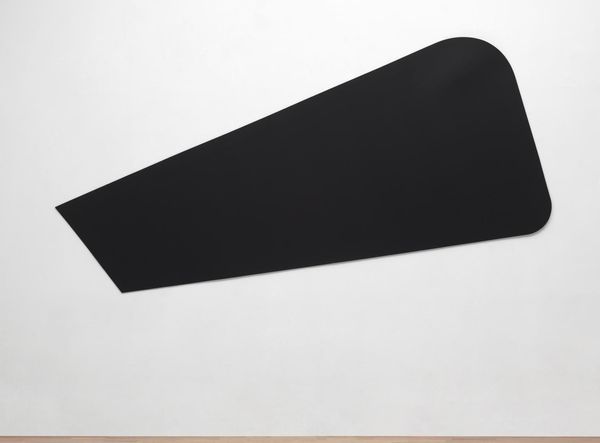
Dimensions: object: 1803 x 1803 x 1803 mm
Copyright: © Phillip King | CC-BY-NC-ND 4.0 DEED, Photo: Tate
Curator: Here we have Phillip King's striking sculpture, "And the Birds Began to Sing," held in the Tate collection. Editor: My first thought is that it feels strangely theatrical, like a stage set for a primal drama. The stark black and red are really dramatic. Curator: It’s fascinating how the cone form, often associated with the sacred or monumental, is here rendered in these industrial materials, questioning what we consider timeless. Editor: Exactly. The construction itself, the way the material is shaped and joined, speaks to a post-war exploration of new methods and the democratisation of material in art making. I wonder how heavy this thing is. Curator: Perhaps the title hints at a deeper connection. Red and black, of course, carry profound symbolic weight throughout history, representing passion, danger, and transformation. Editor: Maybe, or maybe the artist was just thinking about how to bend some metal into a pleasing shape. I appreciate the ambiguity, really. Curator: It certainly invites layers of interpretation. Editor: Indeed. It's been quite the conversation.
Comments
tate 6 months ago
⋮
http://www.tate.org.uk/art/artworks/king-and-the-birds-began-to-sing-t00737
Join the conversation
Join millions of artists and users on Artera today and experience the ultimate creative platform.
tate 6 months ago
⋮
King was part of the 1960’s ‘New Generation’, group of artists. They used bright colours and new materials such as plastic and fibreglass to make sculpture that defied established conventions. He often used cones in his work because of the stability of the shape. He could produce shapes that were large yet not heavy, particularly when he rolled flat sheets into what he called ‘semi cones’. He said a cone ‘can allow maximum manoeuvrability in an effort to make mass controllable in terms of shape, volume, surface, colour, contour, space.’ In this work he said ‘the static qualityof the outer cone is merging into the dynamic inside activity’. Gallery label, September 2018
